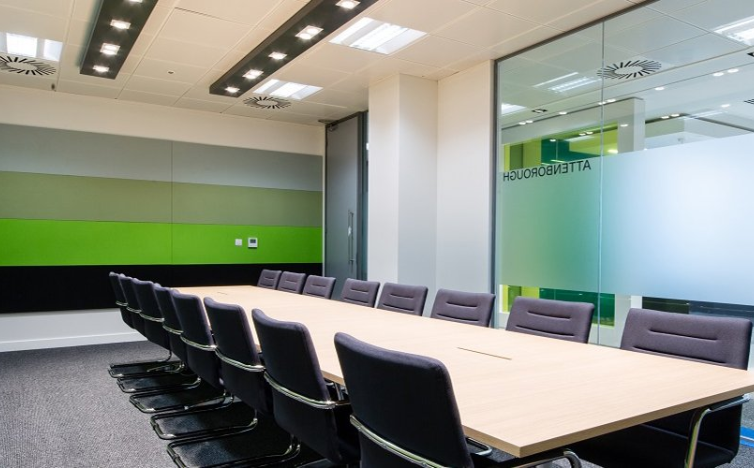Meeting room acoustics play a crucial role in ensuring clear communication and productivity. Poor acoustics can lead to misunderstandings, fatigue, and inefficiency. This article covers the fundamentals of meeting room acoustics and how to optimize them for better results.
Why Acoustics Matter
Good acoustics ensure that speech is clear and distractions are minimized. In a meeting room, this means reducing echoes, background noise, and sound leakage. Proper acoustics enhance focus, collaboration, and overall meeting effectiveness.
 Key Factors Affecting Acoustics
Key Factors Affecting Acoustics
- Room Size and Shape: Larger rooms or irregular shapes can create echoes and sound distortions.
- Materials: Hard surfaces like glass and concrete reflect sound, while soft materials like carpets and curtains absorb it.
- Background Noise: HVAC systems, outside traffic, or adjacent rooms can interfere with conversations.
- Furniture Arrangement: The placement of tables, chairs, and other furniture can impact sound distribution.
Improving Meeting Room Acoustics
- Use Acoustic Panels: Install sound-absorbing panels on walls and ceilings to reduce echoes.
- Add Soft Furnishings: Incorporate rugs, curtains, and upholstered furniture to absorb sound.
- Seal Gaps: Ensure doors and windows are properly sealed to prevent sound leakage.
- Invest in Sound Masking: Use white noise systems to drown out distracting background noises.
Contact Muhammad Shaheen Carpentry at 971 55 219 6236, and discover the transformative science of soundproofing for your space.
Conclusion
Optimizing meeting room acoustics is essential for effective communication and productivity. By understanding the key factors and implementing practical solutions, you can create a space that supports clear and focused discussions.

